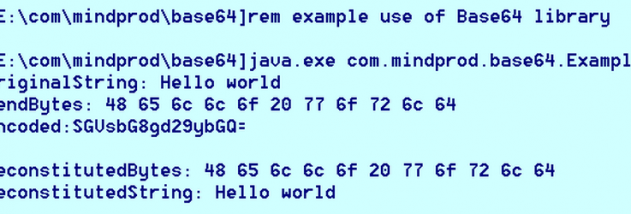
- #Base64 encoding impact on ascii file size zip file#
- #Base64 encoding impact on ascii file size code#
That email was just build as a service to send small messages between users. What are the limitations of 7Bit Encoding? I just want to know that WHich encoding i should used. So I have used 7bit encoding ,and it gives me the good optimal size. then he should be able to view that.īut the size of the EML that we have created using Base64/Quoted printable encoding is larger than the original. But when user opens it in different Message Transfer Agent like OUtlook, OutLook Express, etc. I just want to store it on the FileSystem. My Basic requirement is to not send an EML file using SMTP. For Attachemnt we used System.Net,Mail.Attachment class We have following methods for generating EMLĢ. The property is TransferEncoding, there you can specify the Encoding Type. API provides a way to change the encoding for attachemnts. NET Frameworks MailMessage class for creating EML files. It was long before the internet and home computer area! At that time, nobody had an idea that it could be a requirement to transfer big files through emails. That way you do not have to create something that - from it's approach - wasn't build to keep files! (Always keep in mind, If you want a file that could be universaly used, you could even think about office documents with embedded files. Or maybe keep everything in a database or so? Without any deeper details it is hard to
#Base64 encoding impact on ascii file size zip file#
a zip file with the contents you like e.g. You just want to document something, there are much better solutions in my eyes.

So the only valid option in my eyes is the base64 encoding for binary files.Īnd at the moment you see me completly confused: You create emails but you do not send them at all? I am a little wondering about this design because whenever I see an email I expect that it either will be sent or that it was already sent in the past.
#Base64 encoding impact on ascii file size code#
That is exactly what you need: In your attachement you hand over a stream to your file - at least in our code it was that way - I didn't check that codeproject project in detail!)

The base64 encosing is written as stream-based data. But I have to confess that I didn't check the exact encoding that is done so far. So I would interpret it as a valid text encoded file (e.f. The Quoted-Printable is for characters, that can be printed. So you should only use this encoding for attachement that is already in 7-bit ASCII characters! The data is in 7-bit US-ASCII characters with a total line length of no longer than 1000 characters. You should have a closer look at the TransferEncoding enumeration ( )īecause it explains the different options.


 0 kommentar(er)
0 kommentar(er)
